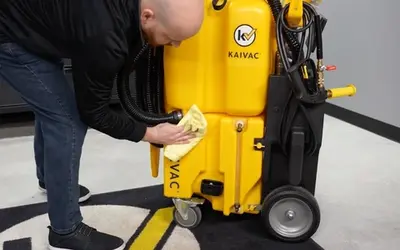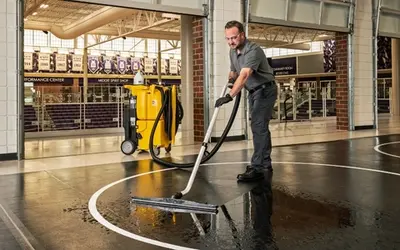Airplane Cleaning for Health and Safety

Proper, thorough airplane cleaning should be a given in a post-COVID-emergency world. But judging by multiple news articles about disgusting airplane conditions it seems like airplanes are actually less clean and safe than before.
Why would airplane cleaning take a nosedive now? Increased demand certainly plays a role. Air travel is up all over the world in 2023, with domestic traffic globally surpassing pre-pandemic levels. Combine that with staffing issues, time constraints between flights, and equipment shortages and the result is dirty planes and unhappy travelers.
To be fair, not every airplane is a flying biohazard. While there is no industry-wide standard for cleanliness, some companies take airplane cleaning very seriously. ANA All Nippon Airways was named the world’s cleanest airline in 2023, followed by 19 other international carriers. (Looking for the cleanest North American airline? Then fly JetBlue Airways).
With health and safety still on everyone’s mind, here are common airplane cleaning practices to contemplate before your next flight.
Airplane Cleaning: Turn Cleaning for Quick Turnaround
Turn cleaning describes the service a plane receives right after landing before it “turns” and takes off again. Speed is the most important part of this service. Right after most passengers have de-planed crews of five to 15 people rush in to take care of:
- Galley cleaning
- Vacuuming
- Trash removal
- Touch point cleaning and sanitizing
- Lavatory cleaning
Restrooms do get a lot of attention during turn cleaning. But the dirtiest place in an airplane is not the lavatory. It’s the tray table, the actual place where food is served.
Because of heightened awareness, many airplane cleaning services now sanitize touchpoints during a turn clean. That includes the tray table, armrest, window shade, air vents, reading light and call buttons and handles on overhead bins.
Airplane Cleaning: Overnight Service
When an airplane remains at an airport for between eight to 10 hours it receives an overnight clean. Very similar to a turn clean but more robust, overnight clean may include more thorough vacuuming, more disinfecting and sanitizing and even taking out the seats and shampooing carpets.
Or not. With no industry-wide standard, some companies do more than others or at least they did during the height of COVID. Now things appear laxer at least according to one retired flight attendant. Explore.com reports that Stephanie Biron told CNN she never knew what to expect after cleaning because there was no consistency. “Sometimes you come on and you have to go out and tell the agent, ‘Look, the plane looks terrible. We need somebody to come on and redo it.’ It just varies all the time.”
Airplane Cleaning: Going Deep
Deep cleaning is just as it sounds. This intense, restorative airplane cleaning regime touches every part of the inside of the craft. Because of its rigor, deep cleaning takes several hours to complete. Some airlines deep clean their crafts every month, others do it after every 500 hours of flying time.
Deep cleaning looks very much like auto detailing. Overhead bins are completely vacuumed out. Seats and other surfaces are removed so internal mechanisms can be vacuumed and sanitized. Fabrics are inspected. Galleys are scrubbed. Some airlines even invest in specialized equipment to assist in the process.
Airplane cleaning might look similar to other contract cleaning jobs, but time pressures and extremely cramped quarters make the job much harder. Looking for tools to make your contract cleaning job easier? Click here for solutions from Kaivac.
Related Posts

Preventive Maintenance for Your No-Touch Cleaning® System
Your Kaivac No-Touch Cleaning system makes restroom maintenance fast and easy. Keeping your No-Touch Cleaning system in good working order is also fast and easy. Kaivac makes performing preventative maintenance and troubleshooting potential issues simple. No special equipment or technical expertise required.
Read more
A Cleaning Lesson from Schools and Universities that Rely on Kaivac Systems
School, college, and university facilities departments from around the country love their Kaivac Cleaning Systems. Why wouldn’t they? Designed with the custodial worker in mind, these tools and processes from Kaivac are easy to master, work super-fast, and deliver exceptionally clean, fresh-smelling spaces.
Read more
Reduce Absenteeism Through Better School Cleaning
K-12 school leaders are coming up with a variety of ways to combat chronic absenteeism. Strategies like offering in-school laundry services and basic health care show a lot of promise. But providing better cleaning may be one of the most effective, most cost-efficient tactics available.
Read more